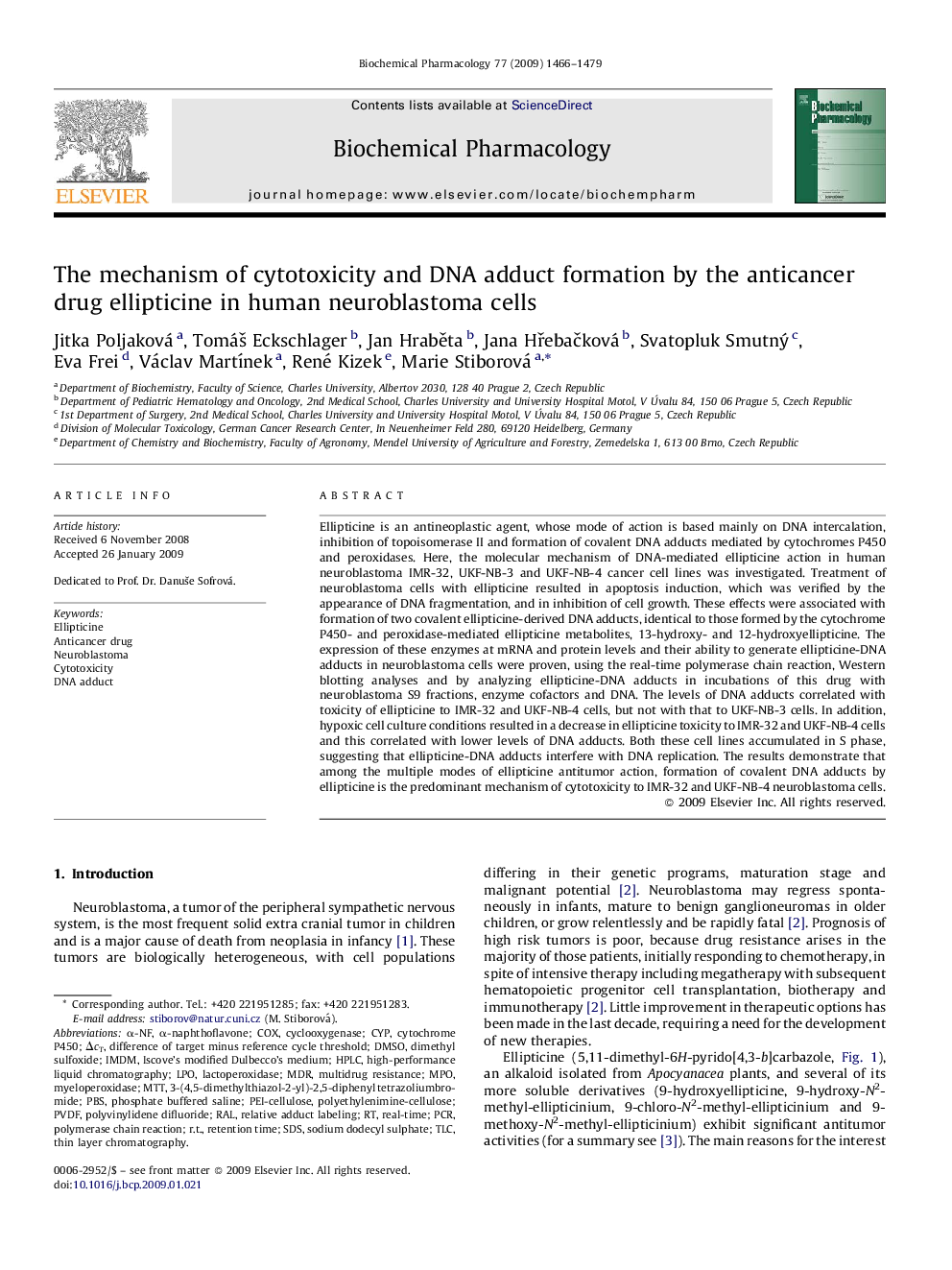| Article ID | Journal | Published Year | Pages | File Type |
|---|---|---|---|---|
| 2513996 | Biochemical Pharmacology | 2009 | 14 Pages |
Ellipticine is an antineoplastic agent, whose mode of action is based mainly on DNA intercalation, inhibition of topoisomerase II and formation of covalent DNA adducts mediated by cytochromes P450 and peroxidases. Here, the molecular mechanism of DNA-mediated ellipticine action in human neuroblastoma IMR-32, UKF-NB-3 and UKF-NB-4 cancer cell lines was investigated. Treatment of neuroblastoma cells with ellipticine resulted in apoptosis induction, which was verified by the appearance of DNA fragmentation, and in inhibition of cell growth. These effects were associated with formation of two covalent ellipticine-derived DNA adducts, identical to those formed by the cytochrome P450- and peroxidase-mediated ellipticine metabolites, 13-hydroxy- and 12-hydroxyellipticine. The expression of these enzymes at mRNA and protein levels and their ability to generate ellipticine-DNA adducts in neuroblastoma cells were proven, using the real-time polymerase chain reaction, Western blotting analyses and by analyzing ellipticine-DNA adducts in incubations of this drug with neuroblastoma S9 fractions, enzyme cofactors and DNA. The levels of DNA adducts correlated with toxicity of ellipticine to IMR-32 and UKF-NB-4 cells, but not with that to UKF-NB-3 cells. In addition, hypoxic cell culture conditions resulted in a decrease in ellipticine toxicity to IMR-32 and UKF-NB-4 cells and this correlated with lower levels of DNA adducts. Both these cell lines accumulated in S phase, suggesting that ellipticine-DNA adducts interfere with DNA replication. The results demonstrate that among the multiple modes of ellipticine antitumor action, formation of covalent DNA adducts by ellipticine is the predominant mechanism of cytotoxicity to IMR-32 and UKF-NB-4 neuroblastoma cells.
Graphical abstractThe plant constituent ellipticine forms DNA adducts detectable by 32P-postlabeling in the neuroblastoma cell line IMR-32. Adduct levels correlate with cytotoxicity.Figure optionsDownload full-size imageDownload as PowerPoint slide
